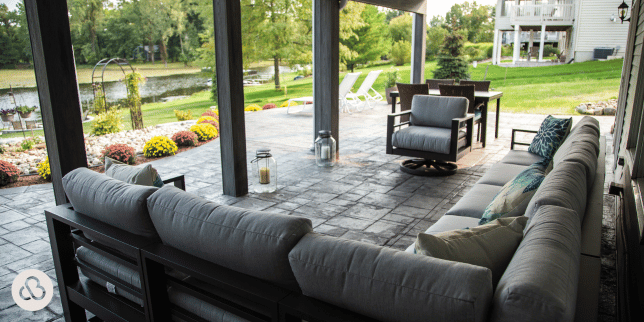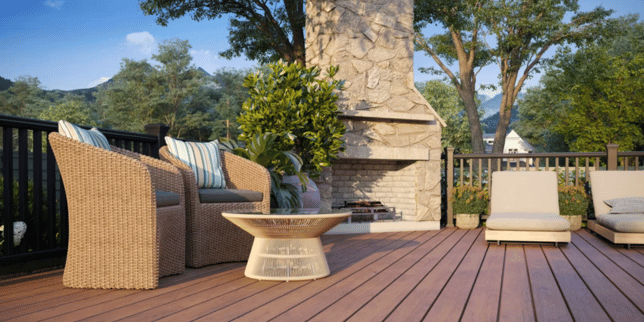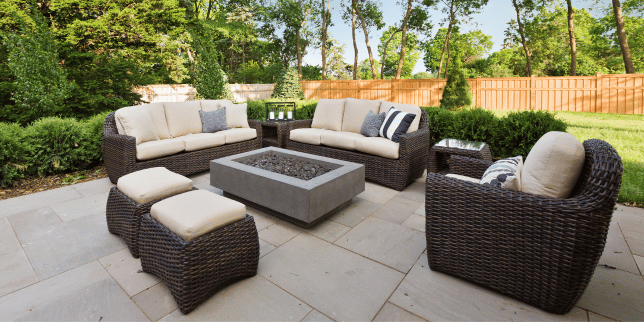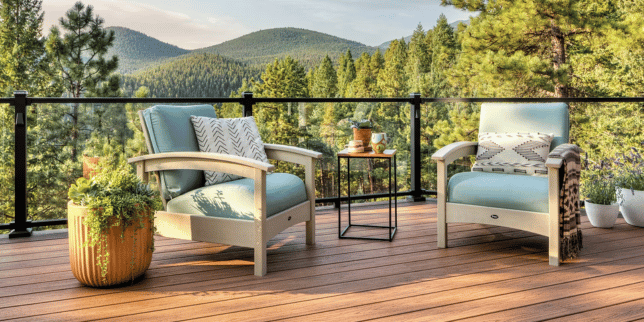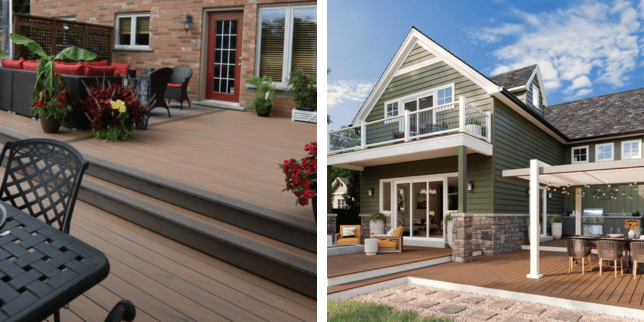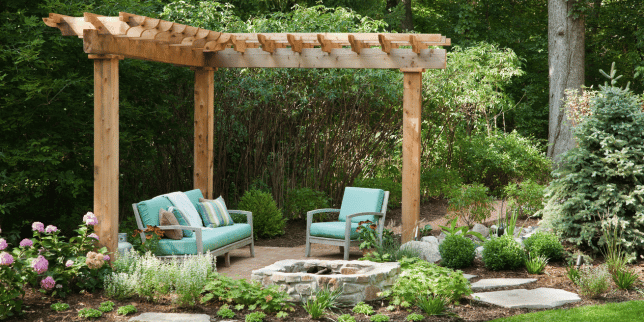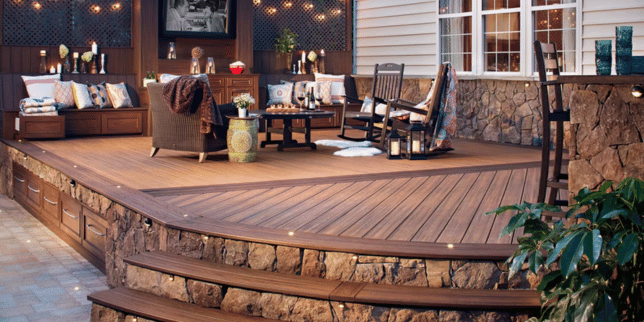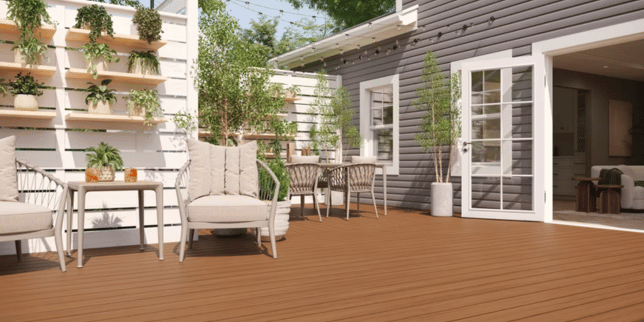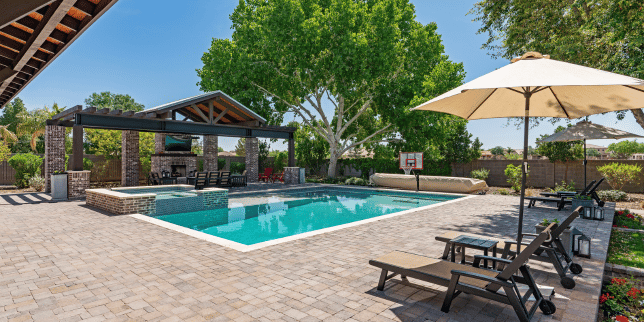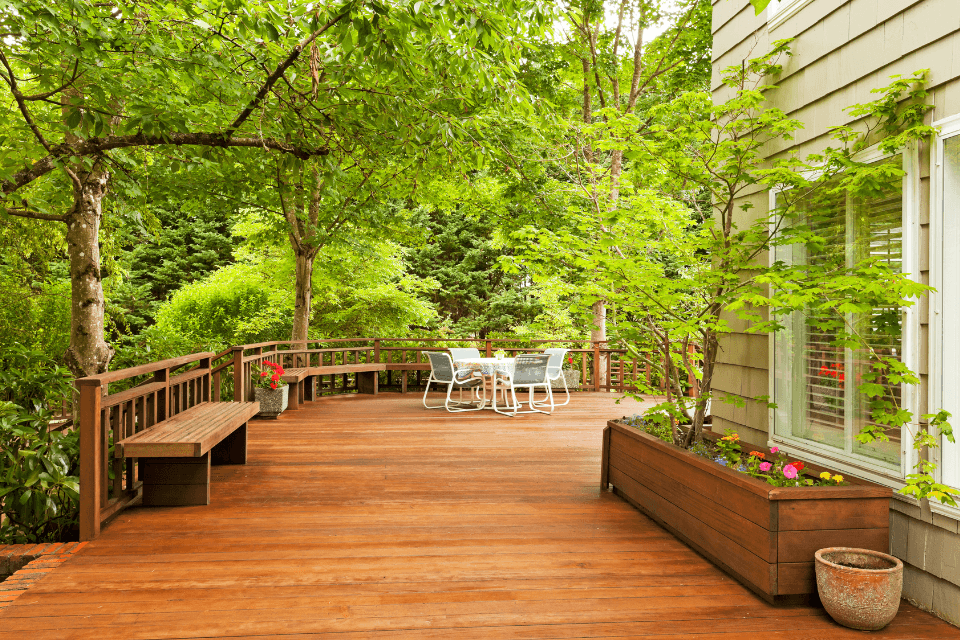
Are you looking to create a deck that accommodates your changing needs as you age? Aging in place is a priority for many homeowners, and designing a deck that promotes safety, accessibility, and comfort is essential.
As we age, navigating stairs, maintaining balance, and enjoying outdoor spaces can become more challenging. That's why it's crucial to consider specific design considerations when planning a deck specifically for aging in place.
At Custom Built, we understand the importance of creating functional and inclusive outdoor spaces for individuals who wish to enjoy their homes through their golden years. With over 15 years of experience in deck design and construction, we have helped thousands of clients transform their decks into safe and enjoyable environments that adapt to their evolving needs.
At Custom Built Design & Remodeling, we understand the importance of creating an environment that supports aging in place. That's why our team includes Certified Aging In Place Specialists (CAPS) who are dedicated to ensuring your utmost satisfaction and comfort in your home for years to come.
In this article, you will discover essential deck design considerations that promote accessibility, safety, and comfort for elderly and physically impaired homeowners:
Effective, accessible designs start with understanding the fundamentals. While seemingly straightforward in concept, designing your deck with ADA compliance in mind will help you envision and build an outdoor living space that you can safely enjoy for years to come.
Let’s review basic deck design considerations for aging-in-place homes:
1. Ramps for Easier Transitions Between Deck Levels
If you’re installing a multi-level deck, all stairs must be modified or enhanced to include ramps. Ramps are incorporated into the design to facilitate independent and barrier-free movement and improve the deck space's overall functioning.
Understanding the significance of ramps can help designers construct inclusive and accommodative deck designs. Ramps provide several significant advantages that are essential for aging in place:
- Allows you safe access to fully enjoy your outdoor living space without worrying about personal injury.
- Can be smoothly included into the deck's overall design to improve accessibility for all users, including elderly people who might have diminished balance or agility.
- With gentle slopes, strong handrails, and non-slip surfaces, you can create a seamless and gradual transition between the deck's various levels, eliminating the need for stairs or steps.
2. Grab Bars and Handrails for Extra Stability
Grab bars and handrails are a crucial component of aging-in-place deck designs because they help people with mobility issues feel comfortable and stable. Seamlessly incorporated into your deck, the design improves accessibility and gives the elderly and physically impaired the support and security they need as they move around the area.
By having strategically placed grab bars and handrails, individuals can confidently move across the deck, independently enjoying the outdoor space in various activities such as gardening, puzzle-solving, poker nights, or simply taking in nature.
Grab bars and handrails should be strategically positioned where they are most needed, such as near steps, ramps, or seating areas. They should be securely mounted to structural supports to withstand pressure and provide reliable support, avoiding breakage and serious injuries.
Here are the advantages of installing grab bars and handrails on your deck:
- Reliable means of support for homeowners with limited strength and mobility
- Provides stability and balance to avoid falls and other life-threatening injuries
3. Wide Walkways for Uninterrupted Foot Traffic
Wide walkways are crucial in deck designs that emphasize aging in place since they greatly improve accessibility, mobility, and safety for senior citizens. You can encourage simple navigation and enough room for people using mobility aids, such as walkers or wheelchairs, by adding wide sidewalks into the design.
The significance of wide walkways in aging-in-place deck designs cannot be overstated, as they facilitate independent movement while enhancing the overall functionality and usability of the deck space.
Like the other configurations on this list, implementing this consideration into your deck design should be prioritized before your project begins. This will ensure your deck builder can prepare the appropriate material length and foundation.
Let’s explore additional benefits of installing wide walkways to your aging-in-place deck:
- Accommodates individuals of varying mobility needs
- Naturally provides comfortable maneuvering for wheelchair and walker users
4. Well-Placed Lighting for Safe Evening Enjoyment
Well-placed lighting is of utmost importance when it comes to aging-in-place deck designs. As we enter our golden years, our vision tends to change, and we require more illumination to navigate our surroundings safely.
Proper lighting on the deck, such as light fixtures, in-stair lights, and floodlights, ensures enhanced visibility, reducing the risk of trips, slips, and falls. It helps to identify potential hazards, such as uneven surfaces or obstacles, allowing individuals to move confidently and independently.
Additionally, well-designed lighting adds an ambiance to the deck, creating a welcoming and inviting atmosphere for family dinners and exciting game nights. By prioritizing well-placed lighting, aging-in-place deck designs can provide a comfortable and secure outdoor space for individuals to enjoy.
Here are a few additional benefits of installing well-placed lighting to your aging-in-place deck:
- Extends safe usability of the deck into the evening hours.
- Adds aesthetic appeal and visual interest to the outdoor environment by accentuating the architectural features and design elements of the deck.
5. Slip-Resistant Decking for Improved Footing
Slip-resistant decking is vital in aging-in-place deck designs. With slip-resistant decking, a secure surface is provided, significantly reducing the risk of accidents and ensuring a safe outdoor environment. This is crucial for elderly adults who want to maintain their independence and continue enjoying their outdoor spaces.
In addition to safety, slip-resistant decking enhances accessibility for individuals with mobility challenges. The textured surface of the decking improves traction, making it easier for those using walkers, canes, or wheelchairs to navigate the deck with confidence.
Let’s review some of our slip-resistant recommendations:
- Rubberized coatings: These coatings provide excellent slip resistance and are often applied over existing deck surfaces. They offer a cushioned and slip-resistant texture that enhances safety.
- PVC decking: PVC decking options often come with slip-resistant surfaces that ensure stability and safety. They are moisture-resistant and provide excellent traction, making them ideal for aging-in-place decks.
- Composite decking: Many composite decking materials feature textured surfaces that provide reliable slip resistance. They are designed to mimic the look and feel of natural wood while offering enhanced durability and low maintenance.
Disclaimer: PVC and composite decking can still be slippery when wet due to its plastic components. Always be extra careful when maneuvering your deck during or after rainy weather.
Next steps to building your deck for aging in place
Designing a deck with aging-in-place considerations is a wise investment that allows you to continue enjoying your outdoor space for years. By incorporating the right design elements, you can create a deck that promotes accessibility, safety, and comfort.
By implementing these considerations, you can create a deck that meets your current needs and seamlessly adapts to future mobility challenges.
At Custom Built, we are committed to helping homeowners create decks that support aging in place. Our 15+ years of expertise in deck design and construction enables us to provide tailored solutions that prioritize accessibility, safety, and comfort.
In this article, we have explored the key deck design considerations for aging in place. From ramps and staircases to handrails and lighting, each element plays a crucial role in ensuring a functional and inclusive outdoor space.
We understand the unique challenges that come with updating your space to age in place, and we are here to guide you through designing a deck that perfectly suits your needs.
To learn more about how to design your deck to promote safety or prepare your home for aging-in-place, read the following articles:
Aaron has been in the building industry his entire life. He worked in his family’s housing business growing up in Dewitt, MI, and for nearly 40 years, built homes in the Mid-Michigan area. He has also worked with the Greater Lansing Home Builder’s Association since he was 18 years old.
Topics:












